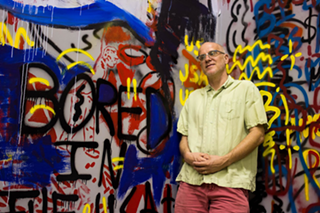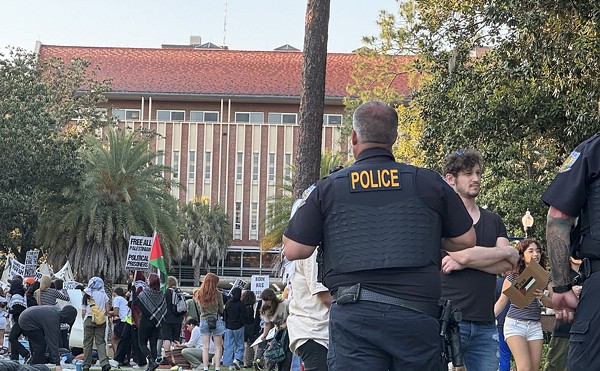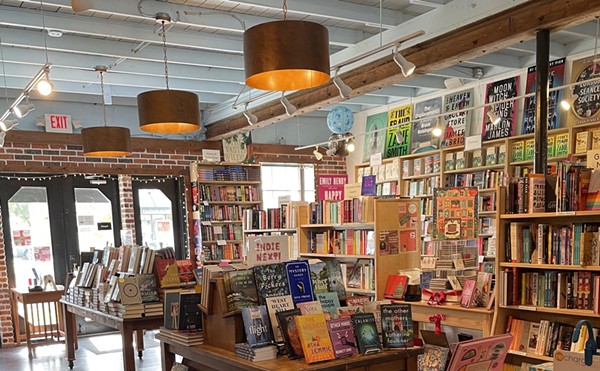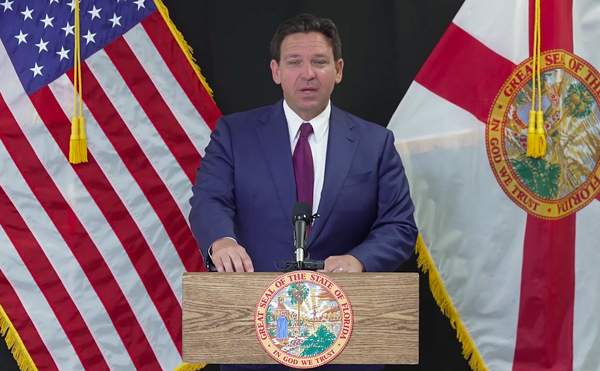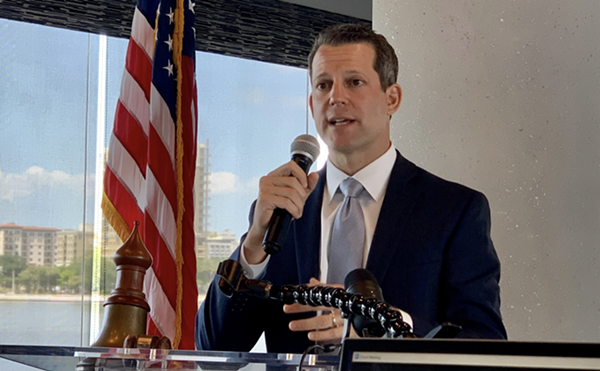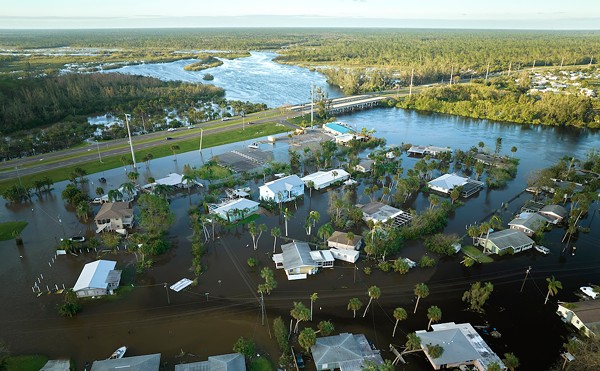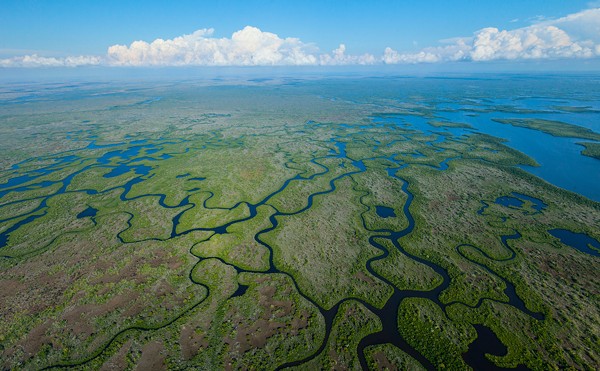St. Petersburg's Rays stadium Deal: A field guide for skeptics
Stay skeptical, St. Petersburg.
By Thomas Hallock on Fri, Sep 22, 2023 at 3:42 pm
So. Your Tampa Bay Rays and the City of St. Petersburg finally reached a stadium deal. The Rays will stay in St. Pete, building in the former African-American neighborhood that the city bulldozed 40 years ago. (If you do not know the backstory, you should.) You've seen the pretty pictures. The new stadium will cost $1.3 billion dollars. As Rays owner ownership and area leaders pop the champagne, the rest of us should be asking hard questions. For instance:
Should municipalities even fund stadiums?
In a word, no. Sports economists argue damningly against sports subsidies. The Brookings Institute states, a "new sports facility has an extremely small (perhaps even negative) effect on overall economic activity." Economic Journal Watch: "no tangible economic benefits are generated by these heavily subsidized professional sports facilities." Local pollsters cry, "jobs." By my own direct observation, however, current Trop employees do not earn enough to support themselves. The work offers little opportunity for advancement. And the hours are erratic, making it impossible to fit the gig with other jobs.
Does the stadium provide a "public benefit"?
Dubious. If you like baseball and can afford a night at the park, you will enjoy the new yard. A stadium, however, is not what the city most needs. The clearest statement of St. Petersburg's current problems comes from FAST (Faith & Action Strong Together), an interdenominational group dedicated to progressive reform. The priorities of FAST: affordable housing, racial justice, water quality and flooding, education, mental health, drugs and crime, healthcare, jobs, transportation. These concerns are not solved by a baseball stadium.
Will redevelopment heal old wounds from the Gas Plant neighborhood?
Maybe. The Rays are a business, and to their credit, the principals have reached out to folks who lost their homes with the construction of Tropicana Field and Interstate-275. The team donated $10K for a lynching memorial adjacent to the current Trop site (a boon to the organizing group, Pinellas Remembers, but a pittance to them). Current Mayor Ken Welch, who brokered the stadium deal, grew up in the Gas Plant, and the Rays have enlisted Gwendolyn Reese, a local historian who does not suffer fools gladly. But the Rays' insistence on using the Hines development company raises a red flag. Hines built The Battery, the new Atlanta Braves facility in suburban Cobb County that Sports Illustrated describes as a monument to white flight. A hard-hitting report from Emerald Morrow for WTSP (with interviews of local clergy and USF policy expert Elizabeth Strom) underscores doubts about affordable housing. The Rays' proposal to fund housing off-site (and the partnership with Hines) suggest a Cobb County clone. Watch for a bait-and-switch, nods to Gas Plant history with little meaningful progress or change.
Can I trust the media for unbiased reporting?
Again, no. Nationwide, newspapers and television endorse bad stadium deals. Why? Sports provides content, as the Columbia Journalism Review explains, so reporters usually bite "on economic impact studies that overestimate spinoff benefits." Because newspapers want to cover big league cities, the mainstream press lubricates bad decisions. Scholars map a clear link between newspaper framing and stadium subsidization. St. Pete follows the path of Buffalo, Cleveland, and other mid-market cities. Back in the ‘80s, the St. Petersburg Times led the charge to raze the Gas Plant; it took other media outlets (Creative Loafing Tampa Bay, The Weekly Challenger, even the conservative Tampa Tribune) to report on damage done by the dome. The Times has rarely veered from the stance of Baseball Uber Alles. Do not trust sports columnists who write about stadium deals.
So the Rays will get their billion-dollar playpen. Like gravity, money follows power. We may like the pretty pictures but the actual building comes at our expense. Cast a rude eye at the claims coming from those who will benefit most. This story has not yet run its course.
Stay skeptical, St. Petersburg.
Thomas Hallock teaches English and Florida Studies at the St. Petersburg campus of USF. With Amanda Hagood, he writes #Creekshed columns about the urban environment for Creative Loafing Tampa Bay.
Subscribe to Creative Loafing newsletters.
Follow us: Apple News | Google News | NewsBreak | Reddit | Instagram | Facebook | Twitter | Or sign up for our RSS Feed
Should municipalities even fund stadiums?
In a word, no. Sports economists argue damningly against sports subsidies. The Brookings Institute states, a "new sports facility has an extremely small (perhaps even negative) effect on overall economic activity." Economic Journal Watch: "no tangible economic benefits are generated by these heavily subsidized professional sports facilities." Local pollsters cry, "jobs." By my own direct observation, however, current Trop employees do not earn enough to support themselves. The work offers little opportunity for advancement. And the hours are erratic, making it impossible to fit the gig with other jobs.
Does the stadium provide a "public benefit"?
Dubious. If you like baseball and can afford a night at the park, you will enjoy the new yard. A stadium, however, is not what the city most needs. The clearest statement of St. Petersburg's current problems comes from FAST (Faith & Action Strong Together), an interdenominational group dedicated to progressive reform. The priorities of FAST: affordable housing, racial justice, water quality and flooding, education, mental health, drugs and crime, healthcare, jobs, transportation. These concerns are not solved by a baseball stadium.
Will redevelopment heal old wounds from the Gas Plant neighborhood?
Maybe. The Rays are a business, and to their credit, the principals have reached out to folks who lost their homes with the construction of Tropicana Field and Interstate-275. The team donated $10K for a lynching memorial adjacent to the current Trop site (a boon to the organizing group, Pinellas Remembers, but a pittance to them). Current Mayor Ken Welch, who brokered the stadium deal, grew up in the Gas Plant, and the Rays have enlisted Gwendolyn Reese, a local historian who does not suffer fools gladly. But the Rays' insistence on using the Hines development company raises a red flag. Hines built The Battery, the new Atlanta Braves facility in suburban Cobb County that Sports Illustrated describes as a monument to white flight. A hard-hitting report from Emerald Morrow for WTSP (with interviews of local clergy and USF policy expert Elizabeth Strom) underscores doubts about affordable housing. The Rays' proposal to fund housing off-site (and the partnership with Hines) suggest a Cobb County clone. Watch for a bait-and-switch, nods to Gas Plant history with little meaningful progress or change.
Can I trust the media for unbiased reporting?
Again, no. Nationwide, newspapers and television endorse bad stadium deals. Why? Sports provides content, as the Columbia Journalism Review explains, so reporters usually bite "on economic impact studies that overestimate spinoff benefits." Because newspapers want to cover big league cities, the mainstream press lubricates bad decisions. Scholars map a clear link between newspaper framing and stadium subsidization. St. Pete follows the path of Buffalo, Cleveland, and other mid-market cities. Back in the ‘80s, the St. Petersburg Times led the charge to raze the Gas Plant; it took other media outlets (Creative Loafing Tampa Bay, The Weekly Challenger, even the conservative Tampa Tribune) to report on damage done by the dome. The Times has rarely veered from the stance of Baseball Uber Alles. Do not trust sports columnists who write about stadium deals.
So the Rays will get their billion-dollar playpen. Like gravity, money follows power. We may like the pretty pictures but the actual building comes at our expense. Cast a rude eye at the claims coming from those who will benefit most. This story has not yet run its course.
Stay skeptical, St. Petersburg.
Thomas Hallock teaches English and Florida Studies at the St. Petersburg campus of USF. With Amanda Hagood, he writes #Creekshed columns about the urban environment for Creative Loafing Tampa Bay.
Subscribe to Creative Loafing newsletters.
Follow us: Apple News | Google News | NewsBreak | Reddit | Instagram | Facebook | Twitter | Or sign up for our RSS Feed

WE LOVE OUR READERS!
Since 1988, CL Tampa Bay has served as the free, independent voice of Tampa Bay, and we want to keep it that way.
Becoming a CL Tampa Bay Supporter for as little as $5 a month allows us to continue offering readers access to our coverage of local news, food, nightlife, events, and culture with no paywalls.
About The Author
Thomas Hallock
Thomas Hallock is Professor of English at the University of South Florida St Petersburg. He is currently writing a book of travel essays about why he loves teaching the American literature survey, called A Road Course in American Literature...
Scroll to read more Tampa Bay News articles
Newsletters
Join Creative Loafing Tampa Bay Newsletters
Subscribe now to get the latest news delivered right to your inbox.

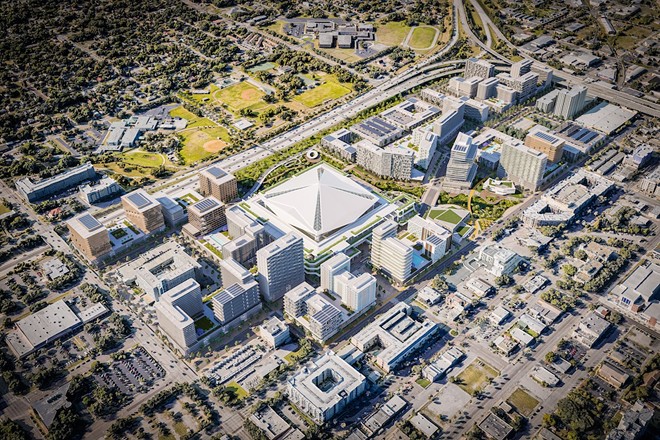
![Tampa Bay Rays unveil plans for $1.3 billion St. Pete stadium, deal still awaits approval from local leaders [Photos]](https://media2.cltampa.com/cltampa/imager/tampa-bay-rays-unveil-plans-for-13-billion-st-pete-stadium-deal-still-awaits-approval-from-local-leaders-photos/u/inlineslideshow/16374126/hines_tropicana_view02_112922.jpg?cb=1695140926)
![Tampa Bay Rays unveil plans for $1.3 billion St. Pete stadium, deal still awaits approval from local leaders [Photos]](https://media1.cltampa.com/cltampa/imager/tampa-bay-rays-unveil-plans-for-13-billion-st-pete-stadium-deal-still-awaits-approval-from-local-leaders-photos/u/slideshowthumb/16374125/hines_tropicana_view01_112922.jpg?cb=1695141135)
![Tampa Bay Rays unveil plans for $1.3 billion St. Pete stadium, deal still awaits approval from local leaders [Photos]](https://media2.cltampa.com/cltampa/imager/tampa-bay-rays-unveil-plans-for-13-billion-st-pete-stadium-deal-still-awaits-approval-from-local-leaders-photos/u/slideshowthumb/16374126/hines_tropicana_view02_112922.jpg?cb=1695140926)
![Tampa Bay Rays unveil plans for $1.3 billion St. Pete stadium, deal still awaits approval from local leaders [Photos]](https://media2.cltampa.com/cltampa/imager/tampa-bay-rays-unveil-plans-for-13-billion-st-pete-stadium-deal-still-awaits-approval-from-local-leaders-photos/u/slideshowthumb/16374127/hines_tropicana_view03_112922.jpg?cb=1695141135)
![Tampa Bay Rays unveil plans for $1.3 billion St. Pete stadium, deal still awaits approval from local leaders [Photos]](https://media1.cltampa.com/cltampa/imager/tampa-bay-rays-unveil-plans-for-13-billion-st-pete-stadium-deal-still-awaits-approval-from-local-leaders-photos/u/slideshowthumb/16374128/hines_tropicana_view04_112922.jpg?cb=1695141135)
![Tampa Bay Rays unveil plans for $1.3 billion St. Pete stadium, deal still awaits approval from local leaders [Photos]](https://media1.cltampa.com/cltampa/imager/tampa-bay-rays-unveil-plans-for-13-billion-st-pete-stadium-deal-still-awaits-approval-from-local-leaders-photos/u/slideshowthumb/16374129/hines_tropicana_view05_112922.jpg?cb=1695141135)
